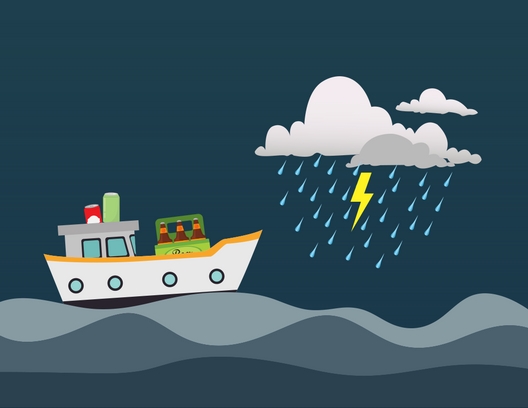A flurry of activity over the last few months raises the question that many in the beer industry have long asked: Has the craft reckoning begun?
While last year was a rough year for brewers of all sizes, the slowdown in craft was particularly pronounced, especially among larger regional and national craft brewers. Though craft beer sales eclipsed $4 billion for the first time, volume growth in the segment rose to just shy of 4 percent, while sales dollars rose 5.6 percent, according to Beer Marketer’s Insights (subscription required.)
Total volume for the top 17 craft brewers as measured by volume fell a combined 1.2 percent, per BMI.
"Is craft still vibrant? Absolutely," says Pete Marino, president of Tenth and Blake, the craft and imports division of MillerCoors. "But underneath the surface, we see a lot of chaos ... and we believe that the chaos will ultimately lead to a shakeout of the segment."
And signs already are beginning to emerge that the market is headed in that direction.
In early December, Craft Brew Alliance, the company that owns Widmer Brothers, Redhook and Kona brands, said it sold its Woodinville, Wash., brewery and would shutter its on-site Redhook tap room. On Dec. 29, the final working day of 2017, Summit Brewing in St. Paul, Minn., said it would lay off 10 percent of its staff, the first time in the brewery’s 30-year history it has cut its work force. That’s after volumes dropped near 10 percent after it pulled distribution from six states.
Once the calendar turned over to 2018, two more established craft breweries — Mendocino Brewing of California and Saratoga Brewing Co. of New York, each of which have been brewing for more than a quarter century —abruptly shuttered. Another craft brewer with a national footprint, San Diego’s Green Flash, announced it was retrenching, cutting 15 percent of its staff and pulling out of 32 states. Then two days later, a New England icon — the longtime New Hampshire craft brewer Smuttynose — put itself on the auction block after volumes declined as it invested millions to expand capacity.
On top of that, Lagunitas said it wouldn't open a brewery it bought in Charleston, S.C., saying it would be too expensive to rehabilitate. Dozens of smaller breweries around the country also shuttered, retrenched, laid off staff or put themselves up for auction within the past six months, leading many in and around the industry to begin questioning whether a shakeout has begun in earnest.
“When you start to connect the dots on these things, you can start to build a narrative of just how difficult it is in today’s market,” says Chris Furnari, editor of Brewbound, a beer industry publication. “Clearly there is a market correction happening here."
There are now more than 6,000 U.S. breweries today, more than double the amount just four years ago, according to the Denver-based Brewers Association. And 83 percent of Americans live within 10 miles of a brewery, association data show.
The increased competition, both from brewers packaging and selling their beer at retail and from their own taprooms, is dragging down sales at bars as well as chipping away at sales of national or near-national craft brands, such as Boston Beer Co. and Sierra Nevada, which combined to shed 380,000 barrels in 2017, according to data compiled by Beer Marketer’s Insights.
Including Boston Beer and Sierra Nevada, six of the top seven craft brewers reported volume losses last year, including New Belgium, Craft Brew Alliance, Goose Island and Spoetzl (Shiner Bock.) Only Lagunitas, which leapfrogged New Belgium to become the nation’s third-largest craft brewer, per BMI, posted a volume gain, up 6.8 percent.
(MillerCoors-owned craft brands Terrapin, Hop Valley, Saint Archer and Revolver collectively grew 55 percent in sales dollars in 2017, outpacing national trends, according to IRI multi-outlet and convenience store data cited by Beer Marketer’s Insights. Anheuser-Bush’s acquired craft brands, meanwhile, collectively grew 31 percent, figures that do not include Karbach or Wicked Weed, per IRI data cited by BMI.)
“The regional breweries are having a really hard time,” says Kate Bernot, former editor at Draft Magazine and a staff writer at The Takeout, where she writes about beer, among other topics. “Consumers are gravitating two places – that very local taproom, or chasing the next new thing, which puts tried-and-true, larger regional breweries at a loss on both of those ends.”
With more craft consumers obsessed with all beers local, breweries like Boston Beer, which makes Samuel Adams, don’t resonate as much with craft beer consumers outside of its home area code, Bernot says. And Sierra Nevada, despite making a nearly flawless pale ale, struggles in this new market to entice consumers who are increasingly seeking the pale ale made a few miles away instead. She blames drinkers’ waning attention spans and the loss of loyalty for the shift.
“The interest in local beer, which some of these larger now-regional breweries championed back in the day, is now to their detriment,” she says. “Craft sort of invented this idea of consumer promiscuity, and it’s now contributing to their downfall. They’re falling on their own swords, in a way.”
And while many of these regional breweries once led innovation, they’re now following the lead of their new, more-nimble competitors. Sierra Nevada, Boston Beer and New Belgium trotted out hazy, New England-style IPAs over recent months, chasing the market instead of setting it, Furnari says.
The rise of the brewery taproom and the traffic they’re stealing from local bars and bottle shops – traditional stalwarts for bigger craft brewers – also is “having a tremendous impact on nationally distributed brands.”
Furnari and Bernot expect more shoes to drop in 2018, with mid-size regional breweries saddled with debt from recent expansions the most vulnerable.
“I think it’s the tip of the iceberg here,” Furnari says. “We’re now just entering that period where it’s about to get really, really turbulent.”

